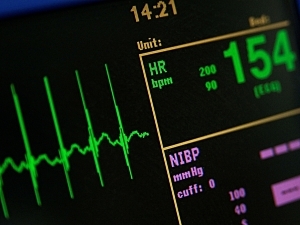Primary aldosteronism (PA) contributes to hypertension, a chronic disease affecting more than 1 billion people worldwide. But investigators at Brigham and Women’s Hospital say that clinicians have significantly underappreciated the true prevalence of PA, failing to screen adequately for the disease and missing an opportunity to reduce the massive burden of hypertension as well as other cardiovascular and renal diseases.
Over the past two decades, several small studies have suggested that PA is more common than traditionally thought. Brigham endocrinologist Anand Vaidya, MD, MMSc, and cardiologist Jenifer Michelle Brown, MD, have upped the ante. They led dynamic phenotyping studies demonstrating that PA is much more prevalent than assumed—and may be a causative mechanism for 15%–24% of primary hypertension cases.
“Most clinicians, from medical school on, are taught that primary aldosteronism is a rare cause of hypertension and therefore rarely think about it,” Dr. Vaidya says. “Our research shows the exact opposite, so we’re miles away from where we should be.”
Not Enough High-risk Patients Being Screened for PA
Current clinical guidelines across specialties call for PA screening in all high-risk patients. The Endocrine Society, for example, recommends PA screening for people who meet criteria such as a sustained blood pressure above 150/100 in three separate measurements taken on different days, having hypertension resistant to three conventional antihypertensive drugs, and having hypertension that is controlled with four or more medications.
Citing evidence from major academic medical centers, Drs. Vaidya and Brown note that only 1%–2% of high-risk patients are ever screened for PA and much fewer than 0.5% of patients with PA are ever diagnosed. Further, they estimate that with over 50 million U.S. adults on treatment for hypertension, 10 to 15 million Americans could have some variant of PA that is amenable to targeted therapy yet goes unrecognized.
In response to poor screening rates within guideline-eligible populations, Drs. Vaidya and Brown have designed and implemented a direct-to-patient PA screening intervention. Since late 2021, this ongoing program has recruited hundreds of patients via social media, online recruitment platforms, and online Mass General Brigham patient portals. All participants have one or more guideline indications to be tested for PA.
“We’ve been able to go to patients from across the Mass General Brigham system and elsewhere in the country to undergo screening to identify this disorder, instead of waiting for what we know are very low rates of clinical screening,” Dr. Brown says.
Results, Interpretation, and Next Steps for Patient and Provider
Program participants attend a video visit for a review of their medical history. In addition, arrangements are made for a local reference lab draw for plasma renin activity, aldosterone, and basic metabolic panel (without adjustment of medications).
Following a review, study physicians categorize test results as “Likely Confirmed PA,” “Possible PA,” or “Unlikely PA” based on established diagnostic frameworks. The program sends a communication detailing the results, an interpretation thereof, and possible next clinical steps directly to each patient and their primary care provider.
“We suspect that part of why the uptake of screening has been so low, even for these high-risk populations, is that people don’t know what to do with the results or how to interpret them,” Dr. Vaidya says. “We’ve tried to make it simple and give people a ‘punchline.’ This is likely, unlikely, or somewhere in the middle, and here are some next steps. The patient or doctor can even ask us directly for advice on proceeding.”
Drs. Vaidya and Brown hope to share the promising preliminary results of the screening program at an upcoming conference. They are excited about the possibility of applying this model—i.e., recruiting participants via virtual channels, having blood work done at local labs—to improve accessibility and reach a more diverse patient population nationwide.
The implications for patient care are also highly intriguing, Dr. Brown adds.
“We know that when these patients are clinically recognized, it’s usually after years or decades of high blood pressure, often with consequences like heart attack, stroke, and heart failure,” she says. “By identifying patients earlier, and having clinicians think about using these therapies earlier, we can potentially prevent a lot of those downstream consequences.”
If you are a provider who would like to refer a patient to this program, please complete this intake form.
